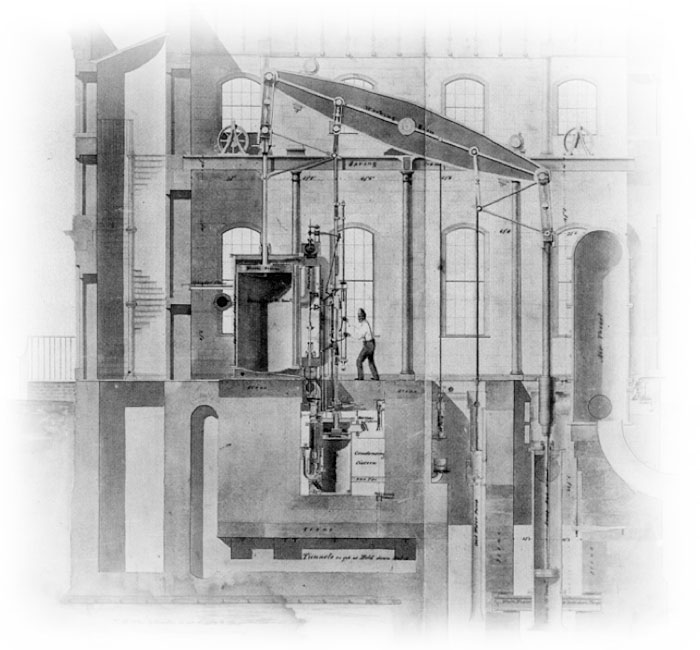#194 Kew Bridge CornishBeam Engines
1820-1869
Five notable 19th-century Cornish beam engines for municipal water supply
Seen in their full splendor and grace, the Kew Bridge museum is a rare experience wherein five beam engines, original to the site, represent the progressive development of the Cornish-cycle steam engine for waterworks service from 1820 to 1869. The Cornish engine was developed to pump water from mines in the early 19th century and some of the finest examples were built for waterworks, like those at Kew Bridge. Cornish engines do not have rotating parts, such as a flywheel, but rather are controlled by piston movement and the opening and closing of valves. In simple terms, steam depresses the piston and raises the plunger and weight box, and on the return stroke, the plunger descends under gravity, displacing water into the main. During the period represented at the Kew Bridge museum, cylinder diameter increased from 65 to 100 inches. Key artifacts are:
- Boulton & Watt engine built in 1820 for an earlier Chelsea station and moved to Kew in 1839-40, later converted to high-pressure operation in 1848, and now restored to operating condition.
- Maudslay engine built in 1838 and converted to the Cornish cycle in 1848.
- Grand Junction 90-inch engine built by Sandys Carne & Vivian of Copperhouse Foundry in 1846, one of only four Cornish engines remaining in existence with a cylinder diameter greater than 80 inches and the only one still operating.
- Bull engine built by Harvey & Co., Hayle, in 1856, one of the few remaining examples of this type of direct-acting pumping engine.
- 100-inch engine built by Harvey & Co., Hayle, in 1869, the ultimate development of the Cornish engine and one of the four largest such machines remaining in existence.
Providing some of the very best examples of Victorian engineering, the site has also been developed as a museum of water supply including compound vertical rotative, horizontal compound and other steam engines that have been moved there. Diesel and electric pumps are also on display.
Landmark Location
Kew Bridge Steam Museum
Green Dragon Lane
Brentford, Middlesex, England
Visiting Info
Regular museum hours;
Take a bus (27, 65, 237, 267), train (British Rail from Waterloo) or the tube (Gunnersbury District Line and BR North London Link, then walk or take bus) to Kew Bridge;
Free parking
Ceremony Notes
10 July 1997, jointly with IMechE
Comments from Visitors/Members
It's not far from London proper, and it is an incredible thing to experience the thumping whirl of the world's largest Cornish engine. Call to see when they're steaming.

